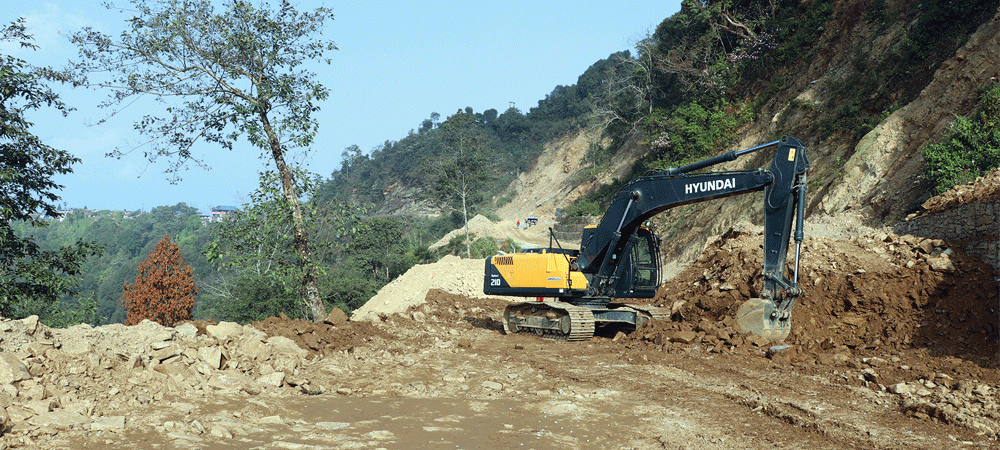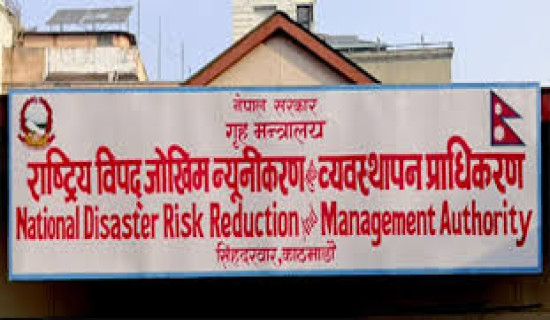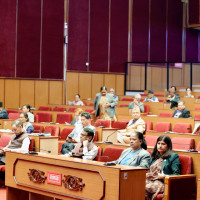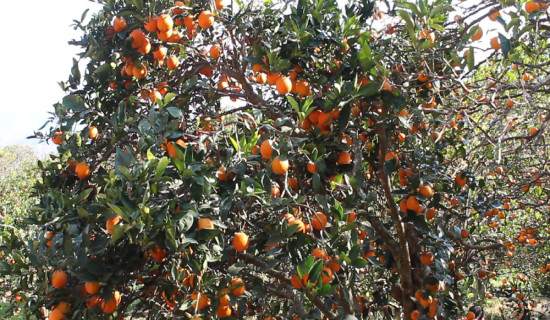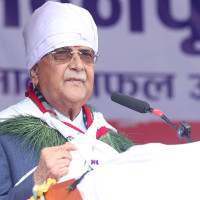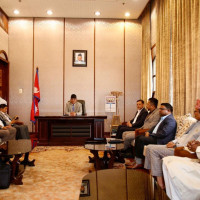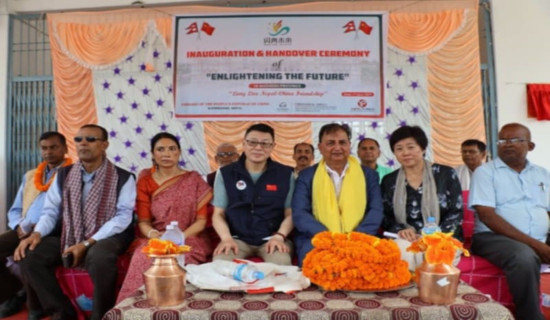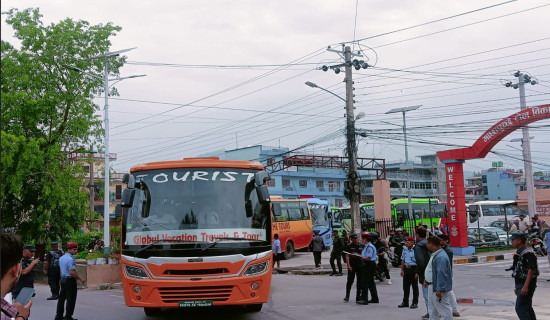- Tuesday, 3 June 2025
Roads bring hill districts of Province 1 closer
By Kabiraj Ghimire,Hile, Dec. 14: Dhankuta got connected to the national road network in 1981 and the other hilly districts of the then Koshi Zone, namely Tehrathum, Sankhuwasabha and Bhojpur got connected in the 1990s.
Similarly, road access reached the eastern hilly district of Ilam in 1963, Panchthar in 1985 and Taplejung in 1993.
However, while these districts of the erstwhile Mechi and Koshi zones got connected to the rest of the country before the end of the 20th century, they were not connected to each other. In fact, up until now, to travel from one of these districts to another, many have to pass through Terai. But that is slowly changing.
The Mid-Hill Highway and the Bhedetar-Rajarani-Rabirake, Mulghat-Triveni and Tamor-Kabeli corridor projects have begun linking Dhankuta with other hill districts of the present Province 1. Tracks of these roads were opened recently. However, they have not been blacktopped and cannot accommodate large vehicles. Nevertheless, small and private vehicles have begun plying and completing their journeys in less than half the time it used to take before.
Stakeholders say that when these roads are complete, public and private transportation will not have to go via the plains and the travel time will be shortened by hours. Prem Ojha, a local of Panchthar, said that the roads would also bring the hill districts economically, socially and culturally together.
Ojha also believed that the roads would help promote the religious and tourist destinations of Province 1 to domestic tourists. The Tamor-Kabeli corridor, for instance, is expected to ease travel between the Chatara, Barahakshetra and Pathivara pilgrimage sites. Likewise, the Bhedetar-Rabirake road will connect the tourist spots of Bhedetar, Rajarani and Miklajung and allow the people of Ilam to travel to destinations across the hills.
“It will truly be a tourist trail,” said Jitendra Rumdali Rai, chairman of Sangurigadhi Rural Municipality in Dhankuta.
“Tourists who come to eastern Nepal want to travel directly between hill stations. Now, this will be possible,” he expressed his happiness.
Meanwhile, the Mid-Hill Highway will allow tourists to travel conveniently between Taplejung, Panchthar, Tehrathum, Dhankuta, Bhojpur and Khotang, said Khagendra Bista, president of the Tourism Infrastructure Development Organisation of Dhankuta.
There are dozens of important spots in these districts including Timbu Pokhari, Hyatung Waterfall, Tinjure Milke Jaljale, Temke Hill and Salpa Pond which will be connected by the road.
These roads will also help transport agricultural and industrial products in the province.
Dhankuta is one of the most developed urban centres of Province 1. But anyone seeking to come here from Taplejung has to travel 378 kilometres and first descend to Terai before ascending back up the hills. The Mid-Hill Highway, though, will bring that distance down to 249 kilometres. The Kabeli corridor will further bring it down to 200 kilometres.
These roads will also bring other cities like Biratnagar, Itahari and Dharan closer together and enliven commercial activities, believed Bijay Santoshi Rai, president of Dhankuta Chamber of Commerce and Industry.

